Solar Equipment in UAE
(13 products available)Solar equipment describes the different parts that are utilized to collect, transform, and store solar energy for later usage.Solar panels (photovoltaic cells) are the main pieces of equipment; they transform sunshine into electricity. Inverters convert direct current (DC) from the panels into alternating current (AC) for usage in homes and businesses. Solar batteries are used to store energy. Additional parts that help maximize effectiveness and guarantee system stability include mounting systems for installation, charge controllers, and monitoring systems. With its rising affordability and efficiency, solar equipment is a major contributor to the world's transition to renewable energy sources. The use of solar energy is being accelerated by technological developments, such as improvements in energy storage, smart grid integration, and panel efficiency. If you are looking for Solar Equipment in UAE. TradersFind connects you with leading Solar Equipment suppliers in UAE that provide a wide range of equipments for your business.You can find the equipments at best price in UAE.Our comprehensive listings and detailed product specifications make it seamless to find the best Solar Equipment manufacturers in UAE to fulfill your requirements.
Solar equipment describes the different parts that are utilized to collect, transform, and store solar energy for later usage.Solar panels (photovoltaic cells) are the main pieces of equipment; they transform sunshine into electricity. Inverters convert direct current (DC) from the panels into alternating current (AC) for usage in homes and businesses. Solar batteries are used to store energy. Additional parts that help maximize effectiveness and guarantee system stability include mounting systems for installation, charge controllers, and monitoring systems. With its rising affordability and efficiency, solar equipment is a major contributor to the world's transition to renewable energy sources. The use of solar energy is being accelerated by technological developments, such as improvements in energy storage, smart grid integration, and panel efficiency.
If you are looking for Solar Equipment in UAE. TradersFind connects you with leading Solar Equipment suppliers in UAE that provide a wide range of equipments for your business.You can find the equipments at best price in UAE.Our comprehensive listings and detailed product specifications make it seamless to find the best Solar Equipment manufacturers in UAE to fulfill your requirements.
Solar equipment describes the different parts that are utilized to collect, transform, and store solar energy for later usage.Solar panels (photovoltaic cells) are the main pieces of equipment; they transform sunshine into electricity. Inverters convert direct current (DC) from the panels into alternating current (AC) for usage in homes and businesses. Solar batteries are used to store energy. Additional parts that help maximize effectiveness and guarantee system stability include mounting systems for installation, charge controllers, and monitoring systems. With its rising affordability and efficiency, solar equipment is a major contributor to the world's transition to renewable energy sources. The use of solar energy is being accelerated by technological developments, such as improvements in energy storage, smart grid integration, and panel efficiency.
If you are looking for Solar Equipment in UAE. TradersFind connects you with leading Solar Equipment suppliers in UAE that provide a wide range of equipments for your business.You can find the equipments at best price in UAE.Our comprehensive listings and detailed product specifications make it seamless to find the best Solar Equipment manufacturers in UAE to fulfill your requirements.
View lessSolar Energy Equipment
- Type of Products : Solar Batteries, Solar Pumps, Solar Inverters, Solar Lights Etc.
- Power Output : Varies By Equipment Type
- Inverter Type : Grid-tied or Off-grid
Description: Shams Al Khaleej Solar Energy Systems LLC provides top-quality Solar Energy Equipment that captures sunlight to create power. Our products include efficient solar panels and reliable battery storage for homes and businesses. They are easy to install and require little maintenance. With our solar equipment, you can save on energy bills and help the environment by using clean energy. Choose our solutions for a brighter, sustainable future!
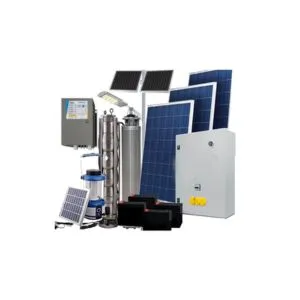
- Type of Products : Solar Batteries, Solar Pumps, Solar Inverters, Solar Lights Etc.
- Power Output : Varies By Equipment Type
View more...
Other Categories
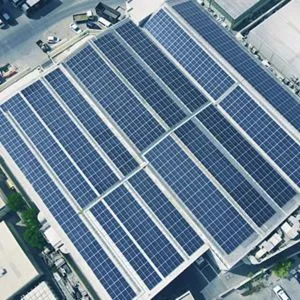
- Type : Solar PV
- Capacity : High
View more...
Al Shirawi Solar
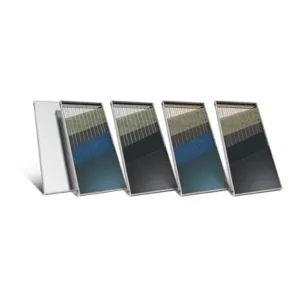
- System Type : Thermosiphon
- Radiation Coefficient : 5-16%
View more...
Solatherm Tanks Manufacturing LLC
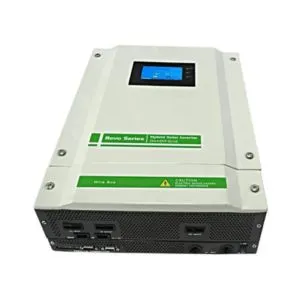
- Batteries : Lithium Ion Batteries
- Application : For Homes, Shops, Offices
View more...
Green Thermal Trading LLC
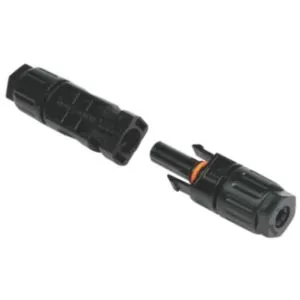
- Voltage : 1500V DC
- Rated Current : 54A , 30A
View more...
Beacon Energy UAE

- Application : Residential, Industrial
- Installation Type : Rooftop
View more...
CleanMax
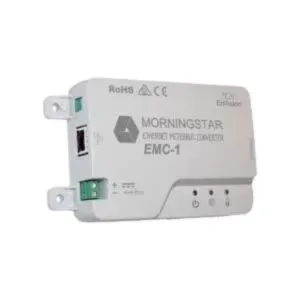
- Application : Residential, Industrial
- Function : Regulates Battery Charging
View more...
Sun And Energy Solar
Other Categories
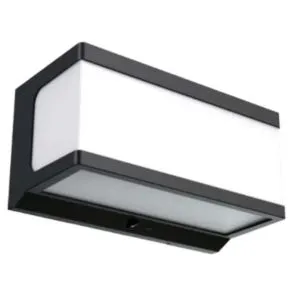
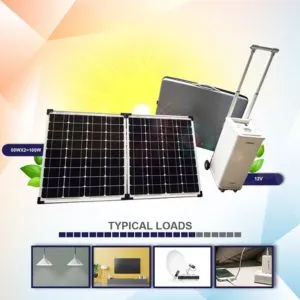
- Product Range : Solar Panels, Battery Pack and Other Solar Equipment
- Mounting : Aluminum
View more...
Maxima Solar General Trading LLC
Other Categories

- Weight : 4.3 kg
- Portability : Yes
View more...
Homifiy LLC

- Type of Products : Solar Batteries, Solar Pumps, Solar Inverters, Solar Lights Etc.
- Power Output : Varies By Equipment Type
View more...
Other Categories
An easy way to post your sourcing requests and get quotes.
- One request, multiple quotes
- Verified suppliers matching
- Quotes comparison and sample request
Types of Solar Equipment Available in UAE
Solar Panels
Solar energy is captured from the sun by solar panels, which then transform it into electrical power. The conventional solar panel is formed of individual solar cells, each of which is made from layers of silicon, boron and phosphorus.
There are 4 major types of solar panels available on the market today: monocrystalline, polycrystalline, PERC, and thin-film panels.
Monocrystalline Solar Panels
Solar panels made of pure silicon crystal that has been cut into wafers are called monocrystalline or single crystal panels. Since monocrystalline panels are made entirely of silicon, they can be distinguished by their dark blue or black tint. Half Cut cells are a type of technology in this category that increases overall power generation by halving square cells.
The high efficiency of monocrystalline modules makes them stand out. They are ascribed to the silicon crystals' homogeneity and cleanliness. Comparing this to other kinds of solar panels, more energy is produced per square foot. They are visually appealing because to their streamlined design, which allows them to mix in perfectly with other installations and rooftops.
But these advantages have a price, quite literally. Because they require a more advanced production method and better purity silicon, monocrystalline panels are typically more expensive. Even while the initial outlay may be more, over time, energy savings and environmental advantages frequently exceed the cost.
Polycrystalline Solar Panels
Polycrystalline solar panels are crafted from multiple silicon crystals, unlike monocrystalline panels, which are made from a single crystal.Silicon is heated and then poured into molds to create ingots throughout the production process. Wafers in the shape of squares are cut once they have cooled. Since the silicon crystals are oriented randomly, these wafers nonetheless have that distinctive blue color.
Comparing polycrystalline modules to monocrystalline panels, one can observe a considerable reduction in production costs. Since upfront costs are a major factor in large-scale solar production equipment, this makes them a desirable option. A reduction in energy use during the production process helps to lower total costs.
Still, as compared to their monocrystalline counterparts, polycrystalline panels usually show lower levels of efficiency.This is because increased electron recombination rates are caused by the presence of numerous crystals. As a result, the efficiency of energy conversion is reduced. Despite this drawback, polycrystalline solar modules are still a popular option for large-scale solar projects without space constraints and budget-conscious consumers.
Thin Film Solar Panels
A unique class of photovoltaic technology, thin-film solar panels are characterized by their flexible, thin, and lightweight construction. Thin-film modules, in contrast to conventional crystalline silicon panels, are created by depositing thin layers of semiconductor materials onto a substrate made of glass, plastic, or metal, such as cadmium telluride (CdTe), amorphous silicon (a-Si), or copper indium gallium selenide (CIGS).
The flexibility of thin-film modules is one of its main benefits. This makes it simple to integrate into asymmetrical or curved surfaces. Additionally, their lightweight structure makes them perfect for applications where weight is a problem. Rooftops and portable solar systems are examples of this. In addition, thin-film panels outperform crystalline silicon panels in high-temperature conditions. In hot weather, their energy yields remain higher.Applications such as building-integrated photovoltaics (BIPV), in which solar equipment distributors are seamlessly incorporated into the building envelope to provide both energy generation and architectural aesthetics, are better suited for thin-film modules. Additionally, solar equipment suppliers utilized these in other mobile applications such as flexible solar panels for backpacks and portable solar chargers.
Solar Inverters
Three types of solar panel inverter technologies are available: string inverters, power optimizers, and micro-inverters. Globally, string inverters are the most popular choice. The three categories are described below;
String Inverters
These are the most affordable inverter choices that are offered in UAE. In the past, solar installation firms typically provided string inverter systems in cases where the roof of your house faced one direction and provided little shade over extended periods of time.
Major string inverter manufacturers have updated their models recently, though, making them more suitable for a wider range of situations. The name comes from the way the panels are grouped together and connected by strings. Solar equipment manufactures connect a single inverter to multiple panel strings for the direct current electricity from the panels into power suitable for appliances.
Power Inverters
They are a subset of module-level power electronics and typically offer advantages over micro-inverters at a lower cost. At every panel are the inverters. However, the optimizers condition the direct current electricity and pass it to a string inverter rather than changing it to an alternate current at the panel site.
When the roof is shaded, their panel-level optimization results in a higher system efficiency compared to string inverters.
Micro-inverters
These can be mounted on every solar panel equipment for businesses is in a system. Without requiring a separate central inverter, they convert the direct current electricity produced by your solar cells into alternative current electricity on your roof. Most often, experts mount them to the solar panels' backs.
Similar to power optimizer inverters, micro-inverters let you keep an eye on the output of individual solar panels.
Solar Water Heaters
A solar water heater is a renewable energy device that heats water for a variety of industrial, commercial, and residential uses by utilizing sunshine. Usually, it is made up of several rooftop collectors that gather solar energy equipment and direct it inside the structure to the areas that require it. Some heaters additionally feature heat transfer fluid that transmits energy throughout the system and a continually heated water storage tank.
Active systems
There are two types of them. Water for the home is pumped via collectors by direct circulation systems and then distributed to the appropriate areas of the house. Solar equipment companies are equipped with automated controllers that detect the presence of sunlight. Nevertheless, in below-freezing temperatures, these systems are useless.
Water is pumped through a heat-transfer fluid that doesn't freeze in indirect circulation systems to heat it. Subsequently, the water passes via heat exchangers and collectors. Although they function in subfreezing temperatures, they are frequently more costly than direct circulation systems.
Passive systems
There are also two varieties accessible here. A storage tank, a solar collecting unit, and pipes that feed cold water into the collector make up an integrated collector-storage passive system. It does not function as well in extremely cold weather, but it is ideal for a house that requires hot water during the day and night.
On the other hand, the principle of warm water rising and cold water sinking governs how a thermosyphon system functions. A dependable design sees warm water from the collector climb into the storage tank. The storage tank's weight is a drawback because it might make things difficult for contractors doing roof maintenance. Additionally, the system is a more costly choice.
Solar Equipment for Different Sectors in UAE
The most valuable aspect of solar panels is the solar cells, which helps in converting sunlight into energy. Most solar panels are made of crystalline silicon solar cells. Since their sizes can vary and the number of cells needed ultimately relies on the size of the solar panels, they are arranged in a structure resembling a grid. The solar panel is sealed and coated with non-reflective glass once the cells are positioned to keep the cells safe from the inside.
Solar Panel Applications for Home Use
- • Electricity: Electricity is the most popular application of solar panels in homes. Our daily lives depend on electricity; without it, we couldn't run the appliances in our homes or complete our daily tasks. Since solar energy is readily available and reasonably priced through solar equipment manufacturers as it is essential in this situation.
- • Cooking: Cooking at home also makes use of solar power equipments. You've probably heard about solar cookers, which prepare a wide range of meals and make cooking much simpler than one may possibly imagine. Selecting the solar equipment supplier providing the ideal solar cooker for your kitchen is all that has to be done.
- • Solar Ventilation: In hot weather, solar-powered ventilation systems, along with solar attic fans, are the answer to keeping your house cool. This is a fantastic alternative for you because it eliminates the need for you to install a full solar panel system at your house.
- • Water Heating: Due to the rising cost of electricity, a growing number of individuals worldwide choose to utilize solar water heaters. The preservation of natural resources is another goal of people's efforts to create a sustainable environment. The water is heated by solar energy to facilitate a variety of domestic tasks, including cooking, cleaning, and taking a bath.
- • Heating Your Home: Keeping your home warm during the winter months is essential for your health. Solar heaters are used to provide heat throughout the winter to keep the residence toasty and comfortable. These solar heaters are positioned in key and thoughtful areas of the house to ensure that there is adequate heat throughout.
- • Solar Lighting: One more significant application of solar energy in homes is solar lighting. Solar lights may be installed anywhere in the house, including the garage, garden, and other outdoor spaces. Compared to the typical electrical power supply we typically use in our daily lives, these solar lights are far less expensive.
- • Portable Solar Power: People carry around portable electronics these days, which need regular access to electricity to be charged and function properly. Solar equipment manufacturers provide portable solar chargers available on the market that may be used to charge various electronics, including tablets and smartphones.
- • Battery Charging: Solar electricity can be used to charge devices that rely on batteries for effective operation. Additionally, solar energy can be utilized to charge storage batteries, which power other equipment.
Applications of Solar Panels in Agriculture
In UAE, agriculture is the most significant industry in our society and the main source of income for those living in rural areas. People in rural areas require access to renewable energy sources, like solar panels, in order to live sustainably. Solar panels are used in agriculture for irrigation, insect control, and lighting of poultry. Hence, agriculture and farming demand a significant quantity of electricity for irrigation, heating & cooling of the houses that have cattle, plowing, greenhouses, dairy operations, etc.
- • Refrigeration: This energy-intensive process is necessary to preserve agricultural produce. It is possible and practical to use solar energy for cooling, especially in rural areas where connection to the electrical grid is limited or nonexistent. Using solar energy to heat or cool the area eventually aids in increasing the shelf life of agricultural products.
- • Drying: Historically, agricultural items were frequently harmed when dried outside. Despite this, drying can be done with solar thermal energy, which has extra advantages including extending the product's shelf life and removing the possibility of damage.
- • Pumps: Extensive irrigation and small-scale agricultural both use solar energy. It is guaranteed to supply water every 24 hours with the aid of a solar water pump that has an integrated inverter.Solar suppliers supply energy-efficient water pumps driven by solar panels, saving expenses and supporting sustainable water management solutions.
Price Range of Various Solar Equipments
Solar Panels:
• Price: AED 400-AED 1,000 per panel (100 to 400 watts)• Factors: The cost depends on the technology type, monocrystalline, and polycrystalline, with efficiency and brand.
• Total Cost of the System: It usually falls in the price range of AED 15,000 – AED 30,000 for a residential 5kW system that is installed.
Inverters:
• Price: AED 1,500 – AED 5,000.• Factors: Prices vary by capacity sizes (typically between 3 kW to 10 kW) and also inverter types (string or micro-inverter).
Batteries (for Energy Storage Systems):
• Cost: AED 5,000 – AED 20,000 per unit• Prices: Prices vary with types of battery (lithium-ion or lead-acid), storage capacity (5 kWh to 20 kWh), and brand.
Installation Services
• Cost: AED 5,000 to AED 10,000 for systems for homes.• Factors: It is the complexity of the installation, the cost of labor, and the size of the system.
Factors Affecting the Expenses
Installation and Maintenance of Solar Equipment
Installation Process of Solar Systems in UAE
- Evaluation of Site: Solar equipment companies evaluates the roof for its capacity in terms of sunlight exposure, tilt, and area.
- System Design: The engineers develop a customized system that includes solar panels, inverters, and batteries.
- Approvals: One should obtain the DEWA Abu Dhabi Electricity and Water Authority or ADWEA Abu Dhabi Water and Electricity Authority approval.Attain necessary permits as well as net metering agreements.
- Installation: Experienced installation companies have qualified installers assemble and install the solar panels. Additional installation includes inverter and battery system installation, linking the system to the grid, and testing.
- Testing: Testing will be done before commissioning .
- Brand: The high-efficiency brands tend to be pricier, like LG or SunPower, while less efficient ones are cheaper.
- Technology: The monocrystalline panels are expensive but seem to have a higher efficiency level as compared to polycrystalline panels.
- System Size: In larger systems, the cost per watt is reduced, yet it will demand an increased upfront investment for a large number of panels.
- Location & Logistics: Installation can be pricey depending on the site, especially challenging sites, for instance.
Importance of Professional Installation
Efficiency and Compliance : A professional solar panel installation ensures that the system is installed safely, meets all the country's standards, and complies with UAE regulations.
Qualified Installation Companies: Use only DEWA- or ADWEA-certified installers. This way, they are assured of being on the top rung as their training is always up to date.
Maintenance and Cleaning Best Practices
Regular Cleaning: Due to the desert climate, dust and dirt tend to build up on solar panels, and the efficiency may decrease by as much as 30%. Panels need to be cleaned every 1-3 months.
Automatic Cleaning Systems: Robotic cleaners and automated systems are becoming increasingly popular to clean effectively and save water.
Maintenance: The inverters, batteries, and wiring of the system should be checked periodically, preferably once a year, so that the system operates within one's expectations.
Dust-Resistant Panels: Some even offer special coating panels where dust build-up is minimized.
Environmental and Economic Benefits of Solar Equipment in UAE
Environmental Impact
One of the most critical impacts of solar energy in UAE is carbon reduction and conservation of the resources. Being a nation traditionally dependent on oil and gas, solar power does help UAE immensely reduce its carbon footprint. The use of such solar panels directly reduces fossil fuel-based electricity that contributes to the different types of greenhouse gas emissions. This is in line with the global fight against climate change and also aligns with UAE national agenda, such as UAE Energy Strategy 2050: increasing the share of clean energy as part of the mix in the national energy mix.
The second advantage of solar power, as well as renewable energy in general, is saving the most precious natural resources within UAE: water. It is known that traditional methods of energy production in UAE-specifically oil and gas-will require huge amounts of water for their extraction. In contrast, solar power requires only a few units of water to generate an equal amount of energy, thus conserving much-needed freshwater within a desert environment.
Economic Development through Renewable Energy
From the economic side, investment in solar power by UAE has seen much expansion through job and technology evolution. More importantly, such projects develop a high-level workforce with competence in renewable energy, something that bodes well for long-term economic sustainability in the country.
In addition, renewable energy motivates technological advancements because UAE wants to be one of the prominent producers of renewable energy. Gains in technology and its practical applications in solar energy resulted in improvements in the efficiency of solar panels, energy storage solutions, and techniques for integration into existing grids. With these advancements, UAE benefits but likewise shows itself in the international stage as a potential destination for exporting renewable energy technology and knowledge.
Energy Security and Independence
This benefits the country to increase its energy security definitively by utilizing diversified sources of energy and thus reduces the country's dependency on oil and gas for electricity. Traditionally, UAE economy has heavily relied on fossil fuels not only as a source of income but also to feed its power energy. Solar power provides a sure, renewable source that decreases the country's vulnerability to the ever-volatile global oil markets.
By offering renewable energy solutions and lowering dependency on fossil fuels, solar equipment manufacturers improve energy security and independence. Expansion in solar energy capacity will take the country a long way toward achieving energy independence, efforts of UAE, providing stability in the electricity pricing besides ensuring the sustainability of energy supplies for years to come. This development not only strengthens the energy resilience of the country but also supports UAE's commitment to being a global leader in sustainable development, as conceptualized within its Vision 2021 and Green Economy Initiative.
In conclusion, on the environmental and economic levels, the potential of affordable solar equipment in UAE is immense in that it assists in reducing emissions, job generation, technology innovation, and a secure, independent future for energy.
Conclusion
TradersFind is a reliable platform for those who are looking for solar equipment in the UAE. You can find different verified solar equipments suppliers in UAE . You can get the complete details such as contact details, location, or WhatsApp number. Through that, you can get in touch with solar equipment wholesalers and buy equipments. In short, TradersFind is the right platform for you to connect with the top solar equipment dealers without any difficulty.
Frequently Asked Questions (FAQs)
Q1: What are the main components of a solar power system?
A1: The photovoltaic cells, or solar panels, inverters, optional solar batteries, mounting systems, and wiring comprise the main parts of a solar power system. Other systems have charge controllers and monitoring devices.
Q2: How do solar panels work?
A2: A solar panel converts sunlight into electricity with photovoltaic cells. When sunfall hits the cells, it generates direct current or DC, which an inverter converts to alternating current or AC for use in houses or commercial enterprises.
Q3: What is an inverter and why is it important?
A3: An inverter converts the DC electricity produced by a solar panel to AC electricity that most appliances use. It's crucial for solar energy to be made usable for power needs in daily life.
Q4: How long do photovoltaic panels last?
A4: The lifespan of photovoltaic panels is about 25 to 30 years, but the efficiency declines with time. Most manufacturers offer a performance warranty for up to 25 years for the panel.
Q5: Do solar panels work on cloudy or rainy days?
A5: Yes, indeed. Solar panels will still work to produce electricity when the sun is overcast or raining. Though not as efficiently as when the sun shines brightly, they can still collect energy-solar energy production is highest under direct sunlight but continues-at significantly reduced levels-during overcast conditions.
Q6: What are solar batteries, and do I need them?
A6: A solar battery is used to store the additional energy the solar panel generates during sunny days for use on cloudy days or during nighttime. Although not necessary for a grid-tied system, they can prove beneficial to have even more independence from the grid and also in case of planned power outages.
Copyright © 2024 Interconnect Marketing Management L.L.C All rights reserved.















